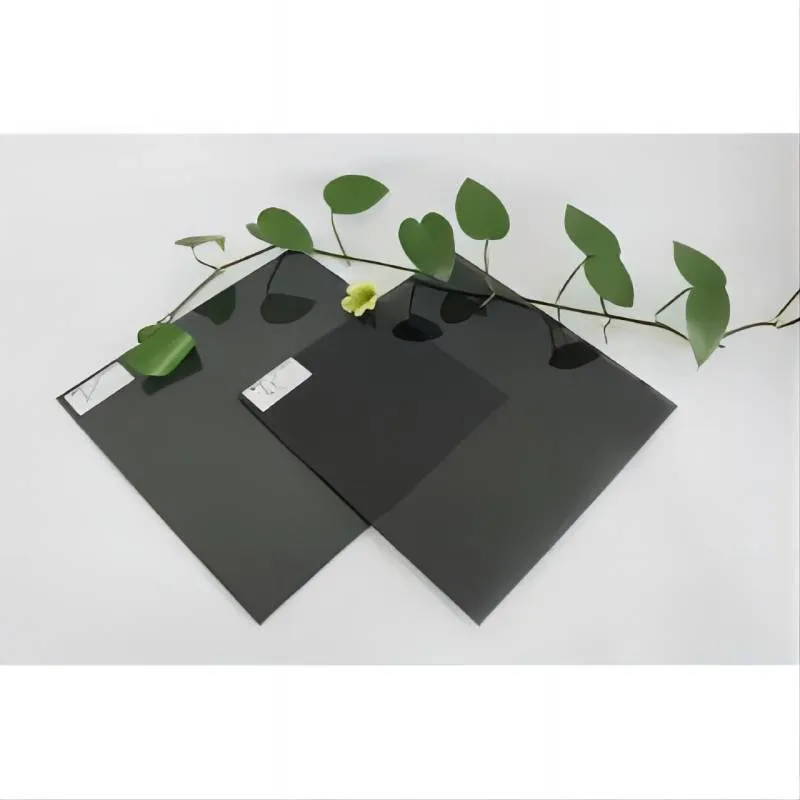From Opaque to Transparent Glass A Journey Through Technology and Aesthetics
The evolution of glass from opaque to transparent has not only transformed architectural designs but also revolutionized various industries, affecting our daily lives in countless ways. Glass is more than just a functional material; it is a symbol of clarity and openness, representing a bridge between the interior and exterior worlds. This article explores the technological advancements, aesthetic importance, and practical implications of transparent glass in contemporary society.
Historical Context of Glass Production
The history of glass dates back to the Mesopotamian and Egyptian civilizations, where early artisans created simple glass objects often characterized by their opaque surfaces. Initially, glass was viewed primarily as a luxury material, decorative rather than functional. The artisans specialized in producing colored and opaque glass, utilizing metal oxides to achieve varying shades. As techniques improved, the demand for transparency grew, culminating in the creation of clear glass during the Roman Empire, which laid the foundation for modern glass-making.
Advancements in Glass-Making Technologies
The transformation from opaque to transparent glass can be attributed to significant advancements in glass-making technologies over the centuries. The development of high-quality silica and the introduction of soda-lime glass in the 17th century marked a turning point in the production of transparent glass. The advent of blow-molding techniques allowed for better manipulation of glass, resulting in clear, elegant designs that could be mass-produced.
The 20th century saw remarkable innovations, particularly with the introduction of float glass, a method developed by Sir Alastair Pilkington. This process involves floating molten glass on molten tin, resulting in a smooth, uniform sheet that is transparent and free of distortions. The widespread availability of float glass led to its adoption in architecture, fostering a new aesthetic characterized by large glass windows and facades.
The Aesthetic Importance of Transparent Glass
Transparent glass not only serves functional purposes but also plays a pivotal role in contemporary design. Its ability to create a sense of openness allows architects to design spaces that foster connection with the environment. The use of large glass panels in residential and commercial buildings breaks down barriers, blurring the lines between indoor and outdoor spaces. Natural light floods interiors, promoting well-being and creating a sense of harmony.
opaque to transparent glass
Moreover, transparent glass has become a canvas for artistic expression. Artists and designers use it in innovative ways, incorporating various techniques such as etching, layering, and treating glass to produce intricate designs. This transformation of glass from a simple material to a medium of art has vastly enriched contemporary architecture and design.
Functional Implications in Various Industries
The functionality of transparent glass extends well beyond aesthetics. In the automotive industry, advancements in glass technology have led to the production of safer, lighter, and more energy-efficient vehicles. Windshields made from laminated safety glass provide enhanced visibility while ensuring passenger safety. Additionally, smart glass technologies are emerging, allowing for dynamic control over transparency and solar control. This innovation addresses energy efficiency and climate control issues by responding to environmental changes.
In the technology sector, transparent displays are at the forefront of development. Companies are experimenting with glass that can change from opaque to transparent at the touch of a button, creating interactive interfaces that merge the physical and digital worlds. This integration has significant implications for retail environments, smart homes, and even public transportation.
Environmental Considerations and Future Directions
As we continue to innovate, it is essential to consider the environmental implications of glass production. While transparent glass allows for daylighting, reducing the need for artificial lighting, the energy-intensive production process poses challenges. Researchers are working on sustainable practices, including the recycling of glass and the development of eco-friendly manufacturing techniques.
The future of glass technology looks promising, with the integration of nanotechnology and advanced coatings that enhance both durability and energy efficiency. As society leans towards more sustainable materials, transparent glass will continue to adapt and transform, maintaining its status as both a staple in construction and an element of artistic expression.
In conclusion, the journey from opaque to transparent glass encapsulates a rich history of innovation and artistic endeavor. It reflects our evolving relationship with the built environment, emphasizing clarity, openness, and connectivity. As we look ahead, the continued exploration of this remarkable material promises new horizons in architecture, technology, and design.
 Afrikaans
Afrikaans  Albanian
Albanian  Amharic
Amharic  Arabic
Arabic  Armenian
Armenian  Azerbaijani
Azerbaijani  Basque
Basque  Belarusian
Belarusian  Bengali
Bengali  Bosnian
Bosnian  Bulgarian
Bulgarian  Catalan
Catalan  Cebuano
Cebuano  Corsican
Corsican  Croatian
Croatian  Czech
Czech  Danish
Danish  Dutch
Dutch  English
English  Esperanto
Esperanto  Estonian
Estonian  Finnish
Finnish  French
French  Frisian
Frisian  Galician
Galician  Georgian
Georgian  German
German  Greek
Greek  Gujarati
Gujarati  Haitian Creole
Haitian Creole  hausa
hausa  hawaiian
hawaiian  Hebrew
Hebrew  Hindi
Hindi  Miao
Miao  Hungarian
Hungarian  Icelandic
Icelandic  igbo
igbo  Indonesian
Indonesian  irish
irish  Italian
Italian  Japanese
Japanese  Javanese
Javanese  Kannada
Kannada  kazakh
kazakh  Khmer
Khmer  Rwandese
Rwandese  Korean
Korean  Kurdish
Kurdish  Kyrgyz
Kyrgyz  Lao
Lao  Latin
Latin  Latvian
Latvian  Lithuanian
Lithuanian  Luxembourgish
Luxembourgish  Macedonian
Macedonian  Malgashi
Malgashi  Malay
Malay  Malayalam
Malayalam  Maltese
Maltese  Maori
Maori  Marathi
Marathi  Mongolian
Mongolian  Myanmar
Myanmar  Nepali
Nepali  Norwegian
Norwegian  Norwegian
Norwegian  Occitan
Occitan  Pashto
Pashto  Persian
Persian  Polish
Polish  Portuguese
Portuguese  Punjabi
Punjabi  Romanian
Romanian  Russian
Russian  Samoan
Samoan  Scottish Gaelic
Scottish Gaelic  Serbian
Serbian  Sesotho
Sesotho  Shona
Shona  Sindhi
Sindhi  Sinhala
Sinhala  Slovak
Slovak  Slovenian
Slovenian  Somali
Somali  Spanish
Spanish  Sundanese
Sundanese  Swahili
Swahili  Swedish
Swedish  Tagalog
Tagalog  Tajik
Tajik  Tamil
Tamil  Tatar
Tatar  Telugu
Telugu  Thai
Thai  Turkish
Turkish  Turkmen
Turkmen  Ukrainian
Ukrainian  Urdu
Urdu  Uighur
Uighur  Uzbek
Uzbek  Vietnamese
Vietnamese  Welsh
Welsh  Bantu
Bantu  Yiddish
Yiddish  Yoruba
Yoruba  Zulu
Zulu 

